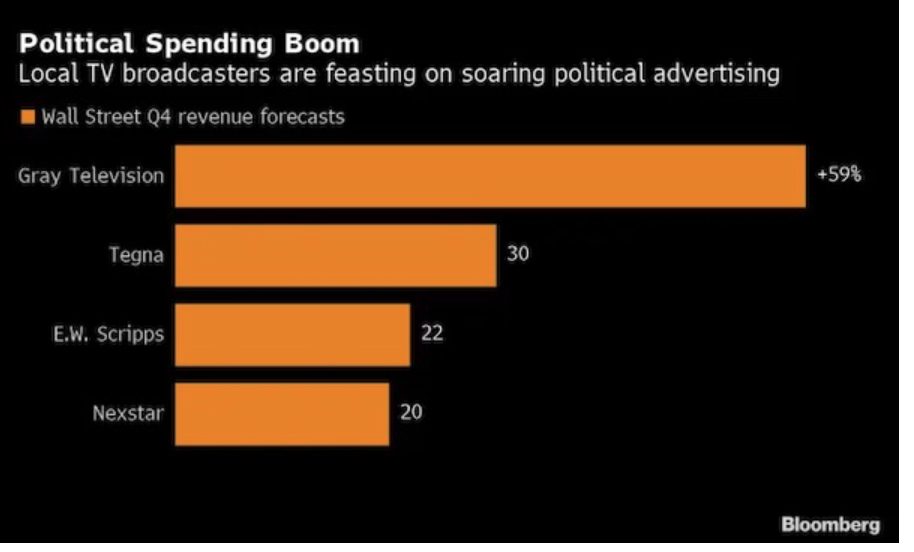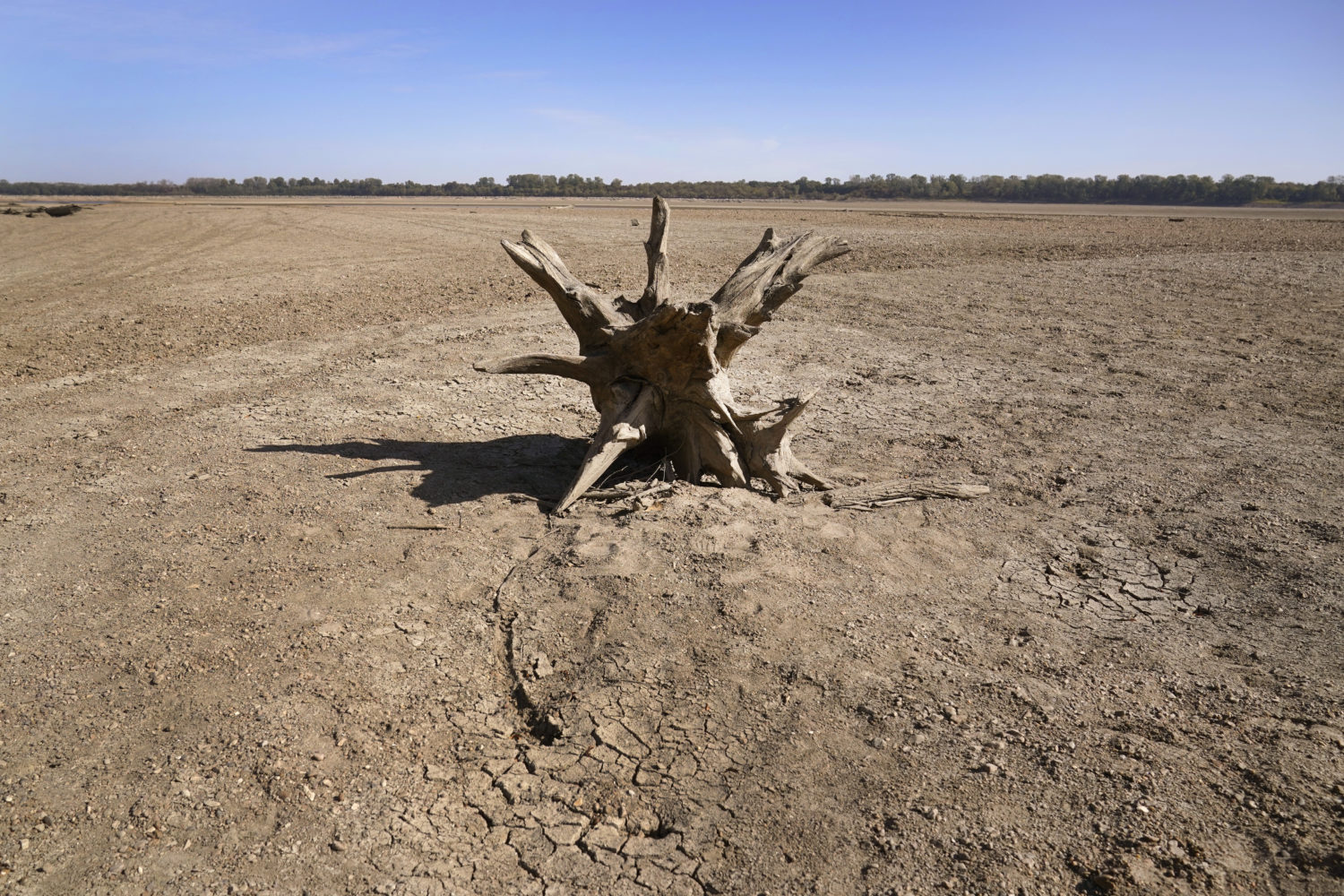
The Morning Meeting with Al Tompkins is a daily Poynter briefing of story ideas worth considering and other timely context for journalists, written by senior faculty Al Tompkins.
Consider this, one river barge carries as many as 15 rail cars and 38 tractor-trailers. And drought has caused the Mississippi River to drop so low that at one point, 2,000 barges were stalled on the river.
It couldn’t happen at a worse time because 60% of the grain and 54% of the soybeans that America exports go down that river. Farmers who can’t ship their crops are piling them under tarps as grain elevators fill up. A Johns Hopkins economist posted this:
WAPT TV (Jackson, Mississippi) talked with a barge company official who said, “’We’re 40 or 50 feet beneath our normal river levels.”
This image from Marinevesseltraffic.com gives you a notion of how many barges and tows are on the river this weekend.
And right now is the start of the grain shipping season, as harvests are underway. And worse, the situation is not expected to change for at least a month. Usually, river levels rise in December.
Usually, the Mississippi carries about a half billion tons of cargo. It’s not just grain. Shippers send 7.2 million tons of cement and concrete up and down the river.
But, the Coast Guard says, the low water levels in recent weeks have resulted in an increased number of barge groundings. The Coast Guard issued a low water safety advisory for more than 500 miles of the Mississippi River between Louisiana and Tennessee, recommending drafts of no greater than 9.5-ft and barges configured to no more than five wide. It means that tows must be limited to 25 barges which is up to a 38% decrease for some shippers.
The American Commercial Barge Line website keeps a daily advisory on river conditions. The most recent report said, “River Levels continue to fall on the Mississippi River with severe impacts to navigation not seen since 1988. Industry is incurring catastrophic impacts to boat capacity, which will in turn drastically decrease ton-mile productivity for the inland rivers.” And, “Groundings have been driving intermittent closures of 12-36 hrs. daily over the past month.”
The Weather Channel included video of people walking on the dry riverbed of the Mississippi River that should be covered with several feet of water. It is an extraordinary sight.
Here is a little bit of good news. That mess of a container ship backup at the ports of Los Angeles and Long Beach is now over. What was a line of 100 giant ships waiting to get into port now stands at four ships. That backup was at the heart of the supply chain problems the country had earlier this year.
A November rail strike on top of the barge backup would be disastrous
Nov. 9 is the new deadline for a possible railroad workers strike, but Union Pacific CEO Lance Fritz says a strike is not inevitable and that there is still “some negotiating to do.”
You will recall that more than a month ago a dozen railroad unions were on the verge of a strike when the White House got involved and the two sides struck a tentative deal. But not the edges of that deal are fraying. AP reports:
The major freight railroads appear unwilling to give track maintenance workers much more than they received in the initial contract they rejected last week, increasing the chances of a strike.
The railroads took the unusual step of issuing a statement late Wednesday rejecting the Brotherhood of Maintenance of Way Employees Division union’s latest request to add seven days of paid sick time on top of the 24% raises and $5,000 in bonuses they received in the first five-year deal.
Six of the 12 railroad unions that represent 115,000 workers nationwide have approved their tentative agreements with the railroads so far, but all of them have to ratify their contracts to avoid a strike.
Political ads pour billions of dollars into local TV stations
You would have already guessed that local TV owners were raking in big bucks this political season by the barrage of ads you see on the screen. And the numbers are staggering.
Bloomberg produced this graphic showing what the biggest local TV owners are banking on this election cycle, with the biggest blitz still ahead. These are forecasts, not actual company reports. But individual stations in politically competitive states will see tens of millions of dollars each in political advertising this year.

(Bloomberg)
You can see how much any candidate, PAC or campaign spends at any TV station or radio station in America during a political season. The files are constantly updated and in these closing days of the election season the last-minute ad buys will pour in trying to snap up whatever commercial slots remain. (And they will be expensive.) The FCC says, “Political files are available for public inspection in an online database hosted by the FCC. The public may access the political files of any broadcast station, cable system operator, DBS provider or SDARS licensee at: https://publicfiles.fcc.gov”
AdImpact points to one TV station in Las Vegas (KSNV) as an example. It has already taken in $54 million in political ads through early October. And there is nothing unusual about that station or the races in that state.
Kantar Media Intelligences Inc. expects TV stations to realize some $4.2 billion in political ad revenue, though cable, digital and connected TV will also benefit from increased political outlays, according to Steve Passwaiter, Kantar’s vice president and general manager for North America.
One new area having a major impact is connected TV. This segment allows political media planners to fill in some of the linear audience gaps being lost to cord cutting and also provides targeted capabilities.
Passwaiter said campaigns now also have the ability to follow voters from device to device and location to location. All of those attributes are propelling connected TV forward, “and it’s really been propelled forward in this cycle,” Passwaiter said. Kantar is projecting connected TV political ad spending will likely reach $1.5 billion.
Peter Leitzinger, an analyst at Kagan, a media research group within S&P Global Market Intelligence, also noted connected TV’s incremental reach. Leitzinger said the number of broadband-only homes is also rising and that campaigns love the targeting value these platforms offer.
Are you keeping your clothes longer?
This is a British study, but I can’t think of a reason to believe it is not universally true, can you?
A quarter of the clothes in our wardrobes haven’t been worn in a year, even though we’re getting better at keeping them for longer, a study finds.
A survey by environmental group WRAP estimates that the UK’s wardrobes hold 1.6 billion unworn garments.
But it found that the predicted length of time people kept their clothes rose between 2013 and 2021.
A pair of jeans is now kept for four years on average, compared with three in 2013, for example.
Non-padded coats and jackets have the longest lifespans at more than six years apiece while underwear and bras are only kept for 2.7 and 2.6 years respectively.
One researcher found that among Americans, “82 percent of their (clothing) items never saw the light of day last year.”
The Environmental Protection Agency estimated in 2018 (the most recent data available) that Americans recycle about 15% of the textiles (including clothing) that we buy. We burn about 3 million tons of textiles and turn them into energy. We toss about 11 million tons of textiles into landfills each year which amounts to about 75 pounds for each person in America. For context, it means we put about 7 times more textiles in landfills now than we did in 1960 (and yes, that is accounting for the increase in population.)
Between 2000 and 2014, the number of garments purchased by each American increased by 60%. But more recently, the number has been dropping. Maybe the pandemic plays into that but the trend began before the pandemic.










